 The worship to the mountains: a study of the creation myths of the chinese culture The worship to the mountains: a study of the creation myths of the chinese culture
Patricio Bustamante D bys.con@gmail.com Researcher in Archaeoastronomy, Taller Taucan, Fellow researcher of The Los Alamos National Laboratory Geographic Information Systems for the Preservation of Archaeological Sites and Petroglyphs. Member of AURA, the Australian Rock Art Research Association.
W. Fay Yao fyaogm@gmail.com IEEE Computer Society, IEEE Nuclear and Plasma Sciences Society, Resource and Information Specialist, Albuquerque Public Schools System, Research Associates, Archaeology & Petroglyph Study Group, Los Alamos National Laboratory.
Daniela Bustamante danaluvskurt@yahoo.co.uk Architecture graduated.
Abstract
The following article analyzes the possible sacralization of certain elements of the natural landscape in the origin of three mythological characters: Pan-Gu ( ), Fu-Xi ( ), Fu-Xi ( ) and Shen-Nong ( ) and Shen-Nong ( ), all belonging to the formative period of the Chinese culture. ), all belonging to the formative period of the Chinese culture.
The analysis of the folklores indicates that these three prominent figures, in their origin, might have been three humanized mountains that were sacralized. We believe that it was strongly due to the phenomena of Pareidolia, Apophenia and Hierophany, the PAH triad, that explain the many instances where we attribute religious significance or extraordinary connections to ordinary imagery and themes. These three mythological characters might have represented in their origin, the spirit of mountains.
Visual examination of illustrations and photographs from various sources indicates that giant mimetoliths might have been the inspiration for these legends. According to the legends, after Pan-Gu’s death, his body transformed into the 5 sacred mountains of China. This might represent the biggest mimetoliths discovered until this day ( 1,100 km length per 660 km width).
In Chinese literature, Classic of Mountains and Seas (Shan Hai Jing  ) gives solid evidence of the sacralization of the landscape and the elements that constitute it. This is by means of the transformation in visual symbols (mimetoliths) due to the pareidolia phenomena, which established a series of relations between the mountains and the characters. While further illusionary connections were made between the landscape and the characters due to the apophenia-related phenomena. According to Birrel, the intention was "to provide a comprehensive Survey of the Whole World, a descriptio mundi ". ) gives solid evidence of the sacralization of the landscape and the elements that constitute it. This is by means of the transformation in visual symbols (mimetoliths) due to the pareidolia phenomena, which established a series of relations between the mountains and the characters. While further illusionary connections were made between the landscape and the characters due to the apophenia-related phenomena. According to Birrel, the intention was "to provide a comprehensive Survey of the Whole World, a descriptio mundi ".
The phenomenon described in this research allow establishing a relation between the ancient inhabitants of China and other human groups from all five continents, based on the fact that all of them share the same psychology and an similar planet environment
1. Introduction
The present article reviewed various sources, including the British Encyclopedia and Wikipedia. Together they provide the essential information that characterizes these prominent figures. For the analysis of more recent studies of the content of the original legends, other sources were examined as indicated in the text.
Wikipedia is used in that paper as usually “personal communication” is used in archaeological and anthropological researches. An investigation by Giles in Nature magazine in 2005 suggested that for scientific articles Wikipedia came close to the level of accuracy of Encyclopædia Britannica and had a similar rate of "serious errors."
The legends of the three prominent figures of the formative stage of the Chinese culture are examined in relation to the phenomena of sacralization of certain archaeological sites and natural formations in the landscape, depending on the natural familiarity to humans or animals, which seems to award them a special attribution.
The following articles describe archaeological sites that exemplified the formation of the landscapes that coincidentally present observable images of natural forms similar to human beings or animals: Bustamante 2006a, 2007b, 2007d, 2008a, 2008c.
This articles analyzes the influence of the psychological phenomena Pareidolia, Apophenia and Hierophany (PAH Triad) in the recognition of mimetoliths that seem to be present in the origin of the legends of the formative period of diverse cultures.
Wikipedia defines Pareidolia as a psychological phenomenon involving a vague and random stimulus (often an image or sound) being perceived as significant. Common examples include seeing images of animals or faces in clouds, the man in the moon, and hearing hidden messages on records played in reverse.
For Apophenia, the same source indicates that it is the experience of seeing patterns or connections in random or meaningless data. The term was coined in 1958 by Klaus Conrad, who defined it as the "unmotivated seeing of connections" accompanied by a "specific experience of an abnormal meaningfulness" .
Hierophany is described in the Encyclopædia Britannica as shown in the following quote…the Lord did against the Egyptians, and the people feared the Lord; and they believed in the Lord and in his servant Moses.” The purpose of a miraculous occurrence is thus often to reveal a divine reality or numinous dimension. The occurrence may be an event concerned with natural needs or situations, such as illness, hunger, or distress, or a specifically religious event that effects...
Now, the influence of the phenomena of the PAH Triad is changeable in intensity among diverse individuals. In some it shows pathologically (mental illnesses), at the far end there are the individuals who do not see any figure and do not imagine anything in the matter, this can happen for cultural or religious reasons as in the aniconic religions (Judaism, Islamism). The way in which it shows up will depend of: A) the particular beliefs of the observer. B) The context in which the observer lives. C) Observer’s mental condition. D) Cultural background.
The PAH triad is part of the unconscious mechanisms inherent in every human being, present in the primary stages of the development of the human conscience.
Mimetolith 1.a. a natural topographic feature, rock outcrop, rock specimen, mineral specimen, or loose stone the shape of which resembles something else – e.g., a real or fancied animal, plant, manufactured item, or part(s) thereof. b. a topographic feature, rock outcrop, rock specimen, mineral specimen, or loose stone, the surface pattern of which resembles a real or fancied animal ...c. a topographic feature (et alia) with any combination of shape and pattern that resembles a real or fancied animal,... [Greek mimetes (an imitator) and lithos(stone); term coined by Thomas Orzo MacAdoo, cited by Dietrich, 1989)
In the article ¿Qué Parece? Como Pregunta Orientadora en el Estudio de la Topografía Sagrada en la cultura Azteca (Bustamante 2008 a), we analyze various examples of human shaped hills that seem to have originated Aztec legends contained in former pre-Columbian codices, such as the Vindovonensis Codex, constituting the first solid proof that the original inhabitants of America were observing the natural shapes of the hills and assigned a meaning to them.
In the present article, ancient legends and illustrations of three mythical prominent figures seem to confirm a similar find for the formative stage of the Chinese culture.
2. Precedents
China is a mosaic of diverse groups and of multitudes of traditions... When we speak of Chinese mythology we need to be clear that it represents streams flowing together, running parallel, merging or diverging from many places and from many different models of reality. (Palmer Martin and Xiaomin Zhao, 1997). For example, The Classic of the Mountains and seas describes 204 mythical figures, 33 featured as a group and 14 shamans, the total is 251.
The statements of the formative stage of the current Chinese culture, placed during the mythical period of the three august and five emperors, were gathered in texts that date back approximately 2.000 years, by scholars who reinterpreted them in agreement with their philosophical or religious conceptions.
Many practices, stories and world-view in the formative period of Chinese culture, are reflected in the subsequent emergence of Taoism, Confucianism y Buddhism, therefore depending on the sources, these legends present diverse variations.
This article examines the legends of three relevant prominent figures: Pan-Gu (Pan Gu, P'an Ku, Pangu), Fu-Xi (Fu Hsi) and Shen-Nong (Shen Nung, Sennong, Shennong), the way of writing these names changes according to the source. There are many interpretations regarding to the origin of these prominent figures, the legends are analyzed from the perspective of their possible origin in elements of the landscape – as Mimetoliths - and the relation with the psychological phenomena of the PAH Triad.
The following affirmations provide an important track regarding to the sacralization of the mountains in the Ancient China:
-
“All mountains, wheather large or small, have gods and spirits”. (Ge Hong, 283-343, quoted in Ware James 1966)
-
“Thus the written names of the mountains were determined by their respective natural shapes, and the reality of the mountains is enshrined in symbols”. (Needham 2000)
3. Methodology
- Analysis of the legends under the perspective of the PAH triad.
- Visual examination of images relative to these three prominent figures.
- Analysis of these images in relation to the psychological phenomena PAH.
- We strive to standardize the Chinese names spelling by Pinyin for it is the official form used in Mainland China; except where quoted directly from a source.
- The Chinese names are in the simplified style, which is the official usage in the People’s Republic of China/Mainland China.
- The recognition of Mimetoliths is a psychological-visual phenomenon; therefore a relevant part of the analysis is the visual inspection of the images.
4. Material
- Quoted bibliographical sources.
- Use of wikipedia as a source: A Jim Giles survey indicate that Wikipedia comes close to Britannica in terms of the accuracy of its science entries. A Nature investigation finds is about as good a source of accurate information as Britannica. (Special Report Internet encyclopaedias go head to head. Nature 438, 900-901 (15 December 2005)) (http://www.nature.com/nature/journal/v438/n7070/full/438900a.html)
- Regarding this article, the information contained in properly checked websites can be considered equivalent to personal communication. the last consultation date is been indicated after each link.
5. Objectives
- To analyze the legends related to these three prominent figures and to examine the coincidences with phenomena described in articles mentioned in the introduction.
- To identify the possible influence of the PAH Triad and Mimetoliths recognition in the origin of these legends.
6. Description of three prominent figures corresponding to the formative stage of the Chinese mythology:
6.1. Pan-Gu
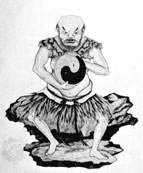
Figure 1: Pan-Gu holding the yin–yang symbol, 19th-century
European print after a Chinese drawing; in the British Museum
British Encyclopedia
P’an Ku, Chinese mythology Pinyin Pan Gu: Central figure in Chinese Taoist legends of creation. P’an Ku, the first man, is said to have come forth from chaos (an egg) with two horns, two tusks, and a hairy body. Some accounts credit him with the separation of heaven and earth, setting the sun, moon, stars, and planets in place, and dividing the four seas. He shaped the earth by chiselling out valleys and stacking up mountains. All this was accomplished from P’an Ku’s knowledge of yin–yang, the inescapable principle of duality in all things.
Another legend asserts that the universe derived from P’an Ku’s gigantic corpse. His eyes became the sun and moon, his blood formed rivers, his hair grew into trees and plants, his sweat turned to rivers, and his body became soil. The human race, moreover, evolved from parasites that infested P’an Ku’s body. These creation myths date from the 3rd to the 6th century. Artistic representations frequently depict P’an Ku as a dwarf clothed with leaves. (British Encyclopedia a)
Wikipedia
Pangu: In the beginning there was nothing in the universe except a formless chaos. However this chaos coalesced into a cosmic egg for 18,000 years. Within it, the perfectly opposed principles of Yin and Yang became balanced and Pangu emerged (or woke up) from the egg. Pangu is usually depicted as a primitive, hairy giant with horns on his head and clad in furs. Pangu set about the task of creating the world: he separated Yin from Yang with a swing of his giant axe, creating the Earth (murky Yin) and the Sky (clear Yang). To keep them separated, Pangu stood between them and pushed up the Sky. This task took 18,000 years; with each day the sky grew ten feet higher, the Earth ten feet wider, and Pangu ten feet taller. In some versions of the story, Pangu is aided in this task by the four most prominent beasts, namely the Turtle, the Qilin, the Phoenix, and the Dragon. After the 18,000 years had elapsed, Pangu was laid to rest. His breath became the wind; his voice the thunder; left eye the sun and right eye the moon; his body became the mountains and extremes of the world; his blood formed rivers; his muscles the fertile lands; his facial hair the stars and milky way; his fur the bushes and forests; his bones the valuable minerals; his bone marrows sacred diamonds; his sweat fell as rain; and the fleas on his fur carried by the wind became the fish and animals throughout the land. Nugua the Goddess then used the mud of the water bed to form the shape of humans. These humans were very smart since they were individually crafted. Nugua then became bored of individually making every human so she started putting a rope in the water bed and lettings the drops of mud that fell from it become new humans. These small drops became new humans, not as smart as the first. The first writer to record the myth of Pan-Gu was Xu Zheng during the Three Kingdoms period (Wikipedia a)
6.2 Fu-Xi
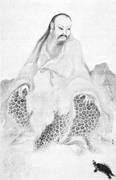
Figure 2: Fu Hsi, painting on silk; in the National Palace Museum, Taipei.
British Encyclopedia
Fu Hsi: Chinese mythological emperor, PinyinFu Xi, formally (Wade-Giles romanization)T’ai Hao (Chinese: “The Great Bright One”), also calledPao Hsi, orMi Hsi.
First of China’s mythical emperors. His miraculous birth, as a divine being with a serpent’s body, is said to have occurred in the 29th century bc. Some representations show him as a leaf-wreathed head growing out of a mountain or as a man clothed with animal skins. Fu Hsi is said to have discovered the famous Chinese trigrams used in divination and thus to have contributed, in some uncertain way, to the development of writing. He domesticated animals, taught his people to cook, to fish with nets, and to hunt with weapons made of iron. He likewise instituted marriage and offered the first open-air sacrifice to heaven. A stone tablet dated ad 160 depicts him with Nü Kua, a frequent companion, who was either his wife or sister (British Encyclopedia b)
Wikipedia
Fu Xi: Mid 2800s BCE. Was the first of the mythical Three Sovereigns ( ) of ancient China. He is a culture hero reputed to be the inventor of writing, fishing, and trapping. However Cangjie is also said to have invented writing. ) of ancient China. He is a culture hero reputed to be the inventor of writing, fishing, and trapping. However Cangjie is also said to have invented writing.
Fu Xi was born on the lower-middle reaches of the Yellow River in a place called Chengji (possibly modern Lantian, Shaanxi or Tianshui, Gansu).
According to legend the land was swept by a great flood and only Fuxi and his sister Nüwa survived, leaving all other disappeared and vanished from the surface. They retired to Kunlun Mountain where they prayed for a sign from the Emperor of Heaven. The divine being approved their union and the siblings set about procreating the human race. It was said that in order to speed up the procreation of humans, Fu Xi and Nüwa found an additional way by using clay to create human figures, and with the power divine being entrusted to them, they made the clay figures to come alive. Fu Xi then came to rule over his descendents although reports of his long reign vary between sources from 115 years (BCE 2852-2737) to 116 years (BCE 2952-2836).
He lived for 197 years altogether and died at a place called Chen (modern Huaiyang, Henan) where his mausoleum can still be found and visited as a tourist attraction.
Among the three primogenitors of Hua-Xia civilization, Fu Xi in Huaiyang Country ranks first.
During the time of his predecessor Nüwa (who according to some sources was also his wife and/or sister), society was matriarchal and primitive. Childbirth was seen to be miraculous not requiring the participation of the male and children only knew their mothers. As the reproductive process became better understood ancient Chinese society moved towards a patriarchal system and Fu Xi assumed primary importance.
In the beginning there was as yet no moral or social order. Men knew their mothers only, not their fathers. When hungry, they searched for food; when satisfied, they threw away the remnants. They devoured their food hide and hair, drank the blood, and clad themselves in skins and rushes. Then came Fu Hsi and looked upward and contemplated the images in the heavens, and looked downward and contemplated the occurrences on earth. He united man and wife, regulated the five stages of change, and laid down the laws of humanity. He devised the eight trigrams, in order to gain mastery over the world. – Ban Gu, Baihu tongyi
Fu Hsi taught his subjects to cook, to fish with nets, and to hunt with weapons made of iron. He instituted marriage and offered the first open air sacrifices to heaven. A stone tablet, dated 160 AD shows Fu Hsi with Nüwa.
Traditionally, Fu Hsi is considered the originator of the I Ching (also known as the Yi Jing or Zhou Yi), which work is attributed to his reading of the He Map (or the Yellow River Map). According to this tradition, Fu Hsi had the arrangement of the trigrams ( ) of the I Ching revealed to him supernaturally. This arrangement precedes the compilation of the I Ching during the Zhou dynasty. Fu Hsi is said to have discovered the arrangement in markings on the back of a mythical dragon-horse (sometimes said to be a turtle) that emerged from the river Luo. This discovery is also said to have been the origin of calligraphy (Wikipedia b) ) of the I Ching revealed to him supernaturally. This arrangement precedes the compilation of the I Ching during the Zhou dynasty. Fu Hsi is said to have discovered the arrangement in markings on the back of a mythical dragon-horse (sometimes said to be a turtle) that emerged from the river Luo. This discovery is also said to have been the origin of calligraphy (Wikipedia b)
6.3 Shen-Nong
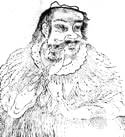
Figure 3: Shen Nung, engraving from San-ts’ai t’u-hui (1607–09);
in the collection of the University of Hong Kong.
British Encyclopedia:
Shen Nung, Chinese mythological emperor, Pinyin Shen Nong (Chinese: “Divine Husbandman”), formally Yen Ti
Second of China’s mythical emperors, said to have been born in the 28th century bc with the head of a bull and the body of a man. By inventing the cart and plow, by taming the ox and yoking the horse, and by teaching his people to clear the land with fire, Shen Nung reputedly established a stable agricultural society in China. His catalog of 365 species of medicinal plants became the basis of later herbological studies. Tales of his youth relate that he spoke after three days, walked within a week, and could plow a field at age three (British Encyclopedia c)
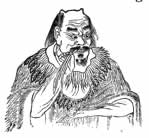
Figure 4
Wikipedia
Shennong: Is a legendary ruler of China and culture hero of Chinese mythology who is believed to have lived some 5,000 years ago, and taught ancient China the practices of agriculture. Appropriately, his name means "the Divine Farmer". Considered to be the father of Chinese agriculture, Shennong taught his people how to cultivate grains as food, so as to avoid killing animals.
He is said to have tasted hundreds of herbs to test their medical value. The most well-known work attributed to Shennong is the Divine Farmer's Herb-Root Classic. First compiled some time during the end of the Western Han Dynasty, several thousand years after Shennong existed – which lists the various medical herbs such as reishi which were discovered by Shennong and given grade and rarity ratings. This work is considered to be the earliest Chinese pharmacopoeia. It includes 365 medicines derived from minerals, plants, and animals. Shennong is credited with identifying hundreds of medical (and poisonous) herbs by personally testing their properties, which was crucial to the development of Traditional Chinese medicine. Legend has it that Shennong had a transparent body and thus could see the effects of different plants and herbs on himself. Tea, which acts as an antidote against the poisonous effects of some seventy herbs, is also said to be his discovery. Chinese legend places this discovery in 2737 B.C., according to which Shennong first tasted tea from tea leaves on burning tea twigs, which were carried up from the fire by the hot air, and landed in his cauldron of boiling water.[1] Shennong is venerated as the Father of Chinese medicine. He is also believed to have introduced the technique of acupuncture.
A close kinsman of the Yellow Emperor, he is said to be a patriarch of the Chinese. The Han Chinese regarded them both as their joint ancestors. He is also considered one of the ancestors of the Vietnamese people (De Minh, grandfather  , was a third generation descendent of Shennong). [2] He was deified as one of the San Huang for his contributions to mankind. , was a third generation descendent of Shennong). [2] He was deified as one of the San Huang for his contributions to mankind.
Shennong is said to have played a part in the creation of the Guqin, together with Fuxi and the Yellow Emperor.
Scholarly works mention that the paternal family of famous Song Dynasty General Yue Fei traced their origins back to Shennong.[3] (Wikipedia c)
6.4 In short:
Pan-Gu: Creation myth of the world (Cosmogony); Separates the Yin (land) and the Yang (sky), extracts the order from the chaos, after 18.00 years of work, gives origin to our Universe, after his death, his head transforms into the mount Thai and his body in other beings and elements of the landscape.
Fu-Xi: Creation myth of mankind; Joins man with woman (Fu Xi - A Wa), with clay creates the first human beings, teaches to cook the food, teaches to going fishing with nets (after a net made of spider web), teaches to hunting with iron weapon, invents the writing, invents the 8 trigrams, creator of the I Ching or book of the changes, creator of astrology.
Shen-Nong: Invention myth of agriculture and medicine; taught the agriculture to the humanity, taught the use of medicinal plants, developed Chinese medicine.
7. Analysis of graphical representations of the three prominent figures
7.1 Common characteristics.
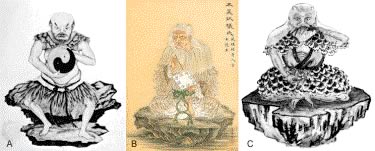
Figure 5: A) Pan-Gu, B) Fu-Xi, C) Shen-Nong.
The images which traditionally represent these three characters, shows variations, but also important similarities, allowing us to establish parallels that might contribute tracks key to understand their archaic origin
Figure 5 shows: A) Pan-Gu (British Encyclopedia a), B) Fu-Xi (painting of the 13th century), C) Shen-Nong (Dharmananda 2001 fig 2), a visual comparison allows to establish the following parallel between the three figures:
- Small horns: they present over heads protuberances similar to small horns.
- Body covered with greens: they present bodies covered by vegetables (leaves or weeds)
Works attributed: main works that attributed to them; A) separation of the Yin from the Yang, B) creation of the 8 trigrams, C) Use of medicinal herbs.
- Bare feet: none of the characters present signs of footwear.
- Sitting on portion of land: In these figures the characters are sitting on a small portion of land with reversed semi conical shape (as a reversed mountain).
7.2 Pan-Gu
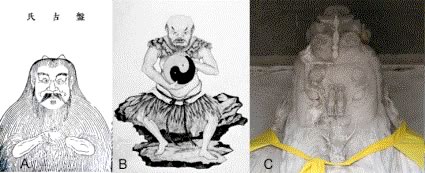
Figure 6: Pan-Gu
In figure 6, image A), taken from Wikipedia (d), shows a Portrait of Pangu (from Sancai Tuhui), dressed in fur and in two horns on the head. Image B) taken from (British Encyclopedia a), illustrates P’an Ku holding the yin–yang symbol, 19th-century European print after a Chinese drawing; in the British Museum. C) Taken from (Emily 2006), “Imagine encountering him at the top of a large, stone tower. He is eight feet tall when seated. He has a dragon for a mouth and two demons for a nose. He has crustaceans crawling around his face, and the sun and the moon cross his forehead”. The three figures show the characteristic horns over the head, the body covered in weeds and especially figure 6 C) shows Pan Gu characterized as a mountain, formed by the animals, plants and stars that surround it.
The essential content of this legend indicates that it is a cosmogony matter. It indicates that the world begins with the original chaos that gives origin to a cosmic egg or original indefinite Universe. From this egg is born P'an-Ku, after 18.000 years of gestation. After 18.000 years of work gives origin to our Universe.
Werner (1994) indicates: “The most conspicuous figure in Chinese cosmogony is P’an Ku. He chiseled the universe out of Chaos. According to Chinese ideas, he was the offspring of the original dual powers of Nature, the yin and the yang (to be considered presently), which, having in some incomprehensible way produced him, set him the task of giving form to Chaos and “making the heavens and the earth.”
Some accounts describe him as the actual creator of the universe—“the ancestor of Heaven and earth and all that live and move and have their being.” ‘P’an’ means ‘the shell of an egg,’ and ‘Ku’ ‘to secure,’ ‘solid,’ referring to P’an Ku being hatched from out of Chaos and to his settling the arrangement of the causes to which his origin was due. The characters themselves may, however, mean nothing more than ‘Researches into antiquity,’ though some bolder translators have assigned to them the significance if not the literal sense of ‘aboriginal abyss,’ or the Babylonian Tiamat, ‘the Deep.’
P’an Ku is pictured as a man of dwarfish stature clothed in bearskin, or merely in leaves or with an apron of leaves. He has two horns on his head. In his right hand he holds a hammer and in his left a chisel (sometimes these are reversed), the only implements he used in carrying out his great task. Other pictures show him attended in his labours by the four supernatural creatures—the unicorn, phoenix, tortoise, and dragon; others again with the sun in one hand and the moon in the other, Page 77some of the first fruits of his stupendous labours. (The reason for these being there will be apparent presently.) His task occupied eighteen thousand years, during which he formed the sun, moon, and stars, the heavens and the earth, himself increasing in stature day by day, being daily six feet taller than the day before, until, his labours ended, he died that his works might live. His head became the mountains, his breath the wind and clouds, his voice the thunder, his limbs the four quarters of the earth, his blood the rivers, his flesh the soil, his beard the constellations, his skin and hair the herbs and trees, his teeth, bones, and marrow the metals, rocks, and precious stones, his sweat the rain, and the insects creeping over his body human beings….
7.3 Fu-Xi
Figure 7, image A) taken from Yi King's (Wilhelm 1973), shows Fu Xi with the shape of mountain, writing the trigrams. B) Shows a very similar image (Schoning) . In both drawings, Fu Xi has nor body nor legs, showing only a hand and the head, which is located on a conical shape similar to a mountain.
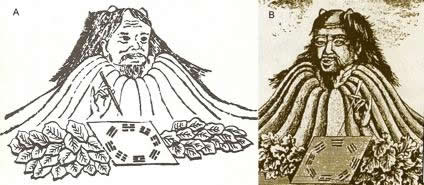
Figure 7: Fu-Xi
7.4 Shen-Nong
In Understanding Chinese Medicine, Dharmananda, (2001 1: The quasi-religious nature of traditional Chinese medicine) points that “The world's major religions have a fundamental book or collection of books that contain the absolute knowledge that forms the religious base. In addition, they all have one or more divine human figures of the past who are representatives of potential that is beyond normal human limitations. These divine human figures have generally delivered the books or the teachings contained in the books. Participation in the religion involves, as a minimum, undertaking some activities and having some thoughts that refer to the contents of the fundamental book(s) and to the divine human figure(s).”
This phrase is applied in a precise way to Shen-Nong's case, in the following figures.

Figure 8: Shen-Nong
In figure 8 A, B and C Shen-Nong dressed in a suit of weeds and chewing a medicinal herb. Over his head, he has two small protuberances similar to horns. In figure C these protuberances really look like the silhouette of a mountain, probably indicating the mountainous origin of the myth.
8 Discussions based on PAH as a analysis tool
8.1 China, Construction of the myth
In Definitions of Myth, Birrell (b) say “The Chinese term for myth, shen-hua, almost exactly coincides with one of the many contemporary Western definitions of myths as sacred narrative. Shen means ‘god’ , ‘holy’; hua means ‘speech’ oral account’, ‘tale’, ‘oral narrative’. In this respect, the second part of the Chinese term, hua, is equivalent to the original meaning of the word mythology: the root of the word myth begins with the Proto-Indian-European root mu ‘to mutter or murmur’, from which the Greek stem my and the noun mythos, meaning ‘word’ or ‘story’, are derived, while the Greek noun logos denotes ‘word’, ‘ordered discourse’, or ‘doctrine’. (Introduction pag.2)
According to Werner (2008) in The Prerequisites to Myth(p. 56) “But the mere increase of constructive imagination is not sufficient to produce myth. If it were, it would be reasonable to argue that as intellectual progress goes on myths become more numerous, and the greater the progress the greater the number of myths. This we do not find. In fact, if constructive imagination went on increasing without the intervention of any further factor, there need not necessarily be any myth at all.
We might almost say that the reverse is the case. We connect myth with primitive folk, not with the greatest hilosophers or the most advanced nations-not, that is, with the most advanced stages of national progress wherein constructive imagination makes the nation great and strong. In these stages the philosopher studies or criticizes myth, he does not make it.
It means that the origin of the myths is placed in the formative stage of the Chinese culture. It is reasonable to think that in this period was fully in force the worship to the mountains and that it had a great influence on the genesis of the myths of Pan Gu, Fu Xi and Shennong.
Later he indicates in Stimulus Necessary (p.24). “The next condition is that there must be to stimulus”. We suggest that in the examined cases, the stimulus that gave origin to these legends could be human shaped mountains or mimetoliths.
8.2 China, Origin of the myth
Werner (2008) in Sources of Chinese Myth (pág. 25), writes “Every one who is familiar with the ways and the language of the people knows that the country is full of common objects to which poetic names have been given, and with many of them there is associated a legend or a myth. A deep river's gorge is called 'the Blind Man's Pass,' because a peculiar bit of rock, looked at from a certain angle, assumes the outline of the human form, and there comes to be connected therewith a pleasing story which reaches its climax in the petrifaction of the hero”.
This, in other words, means that pareidolia allows associating natural shapes with a human figure, with given characteristics, and the apophenia explains the petrification of the character.
Werner also points that (p. 26) “A mountain's crest shaped like a swooping eagle will from some one have received the name of 'Eagle Mountain,' whilst by its side another shaped like a couchant lion will have a name to match. There is no lack of poetry among the people, and most striking objects claim a poetic name, and not a few of them are associated with curious legends……The soul in China is everywhere in evidence, and if myths have "first and foremost to do with the life of the soul" it would appear strange that the Chinese, having spiritualized everything from a stone to the sky, have not been creative of myth. Why they have not the foregoing considerations show us clearly enough. We must take them and their myths as we find them. Let us, then, note briefly the result of their mental workings as reacted on by their environment”.
The influence of the PAH triad seems to be clear in the origin of certain myths.
8.3 P´an Ku as a mountain
According to Werner (p. 28) when P’an Ku dies “His head became the mountains, his breath the wind and clouds, his voice the thunder, his limbs the four quarters of the earth, his blood the rivers, his flesh the soil, his beard the constellations, his skin and hair the herbs and trees, his teeth, bones, and marrow the metals, rocks, and precious stones, his sweat the rain, and the insects creeping over his body human beings…”
Having discussed in previous articles this phenomenon, we are in position to suggest that the shape of the mountain that resembles a human, possibly allowed the first inhabitants of the place to bring order to the chaos and give an explanation for the origin of the universe, and thanks to that, the mountain acquired a sacred shade. In this case, also seems probable the influence of the PAH triad.
As for the antiquity of this Myth, according to Werner (p. 30) The period before the appearance of the P'an Ku myth may be divided into two parts; that from some early unknown dates(date) up to about the middle of the Confucian epoch, say 500 B.C., and that from 500 B.C. to A.D. 400.
8.4 Pan Gu as personification of the "Environment"
Figure 7.2 C shows the effigy of Pan Gu, Made out of animals, plants and Stars. Pan Gu is not an individual but a multiplicity; he is an incarnation of the "Surrounding"
8.5 An Avatar of P'an Ku
InAn Avatar of P'an Ku, Werner (p. 49) says “According to the tradition of Chin Hung, the God of T'ai Shan of the fifth generation from P'an Ku, this being, then called Yüan-shih T'ien-wang, was an avatar of P'an Ku. It came about in this wise. In remote ages there lived on the mountains an old man, Yüan-shih T'ien-wang, who used to sit on a rock and preach to the multitude. He spoke of the highest antiquity as if from personal experience”
8.6 Seating figures
Probably the seating figure (fig. 9), that represents the three described characters, is influenced by the Buddhist tradition. For example, these figures are similar to the painting of the Seated Luohan, (16th-17th century, Ming dynasty, Hanging scroll; ink and color on silk) Even when the position and the figure are similar, Luohan clearly shows human characteristics, does not show protuberances over the head, his gown is of a gender, has in front of him a pair of slippers. Over his head a halo that indicates his holiness.
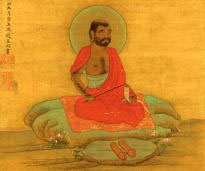
Figure 9: Seated Luohan
8.7 Mount Tai
Evidences of human activity date back 400,000 years to Yiyuan, to men of the Palaeolithic Period. By Neolithic times, 5,000-6,000 years ago, became a significant cultural centre with two cultures, the Dawenkou to the north and the Longshan to the south of the mountain. In the Chinese culture all other mountains are below mount Tai.
According to Ziling (2003) “The Chinese generally believe the Mount Tai symbolizes a god. It has a most majestic appearance, like a giant tower surging out of the earth, overlooking all directions in the center of China. Ancient Chinese scholars have described Mount Tai as "a land pulled from the earth to heaven," and "the pillar that supports heaven," it has also been described as "the center of the world" and "the joint of heaven and earth." Ancient Chinese legends tell of a mystical mountain, known as the Kun Lun Mountain. Kun Lun Mountain was said to be the abode of the gods and the emperor of the gods. About 7,000 to 8,000 years ago, gods taught humans the necessary skills and knowledge in order to survive on earth, as well as a set of moral values to guide man's lives. Chinese ancestors lived and prospered in the region of Kun Lun Mountain. Approximately 4,700 years ago, the Yellow Emperor established a brilliant and magnificent Chinese civilization in the region of Kun Lun Mountain. According to an ancient literary record, "The Yellow Emperor resides in the misty Kun Lun Mountain." "The peak of Kun Lun Mountain situates the Palace of the Yellow Emperor." Actually, Kun Lun Mountain was "the mountain in the center of the world," today's Eastern Mountain, or Mount Tai
8.8 Pan Gu – Mount Tai
Figure 10 A) shows Pan Gu with a split head, as a mountain with double summit or as a step between mountains. In B) the south door towards the sky shows a crack similar to the one shown at the previous figure. It is not the highest summit of the mountain, but the crack can be the one that indicates the importance.
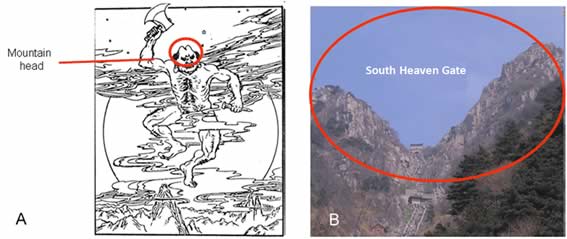
Figure 10: A) Pan-Gu, B) South Heaven Gate
8.9 Pan-Gu and the five sacred mountains
Ancient legends say: Tai Shan was formed by the head of Pan Gu, who after creating heaven and earth, dies from exhaustion. His head and limbs became the five mountains. The Five Great Mountains are arranged according to the five cardinal directions:

Chinese geomancy includes the centre as a direction.
In ancient times, Mt. Huashan was called Mt. Taihuashan. From a distance the five peaks seem to form the shape of a 'flower' (hua in Chinese), hence the name 'Huashan'.
Ziling (2003) say “According to Shu Yi Ji (or A Collection of Bizarre Stories) authored by Ren Fang of the Liang Dynasty, citing Chinese folklore, Pang Gu was the first ruler of the universe. Ren tells a story: "Once upon a time when Pang Gu died, his head became the Four Sacred Mountains, his eyes became the sun and the moon, his body fat became the rivers and the seas, his hair became prairies and forests." Legends from the Qin and Han Dynasties inform us that Pang Gu's head became the Eastern Mountain, his chest became the Central Mountain, the left arm became the Southern Mountain, his right arm became the Northern Mountain and his feet became the Western Mountain." Since the existence of this legend, the Eastern Mountain, or Mount Tai, thus became the head of the Five Sacred Mountains”.
Figure 11 shows A) the distribution and distance between the 5 sacred mountains. B) Based on the legends, a (free) visual interpretation of 5 mountains as the body of Pan Gu. Because of its dimensions, this is the biggest Mimetolith that we have discovered until now.
The Classic of Mountain and Seas describe “Five Sacred Peaks: In this text the mountains which became identified with the five sacred peaks in the five cardinal directions (including the centre) where not accorded a special emphasis among the 447 mountains described in the first five books, which were all considered to be holy. The five peaks are, however, the subject of the commentaries on certain passages. They are Mount great (T’ai) in the east, Shantung; Mount Balance (heng) in the South, Hunan; Mounth Blossom (hua), in the west Shensi; Mounth Ever (heng) in the North, Hopei; and Mounth Exalted (Sung) in the centre, Honan. (pag. 219)
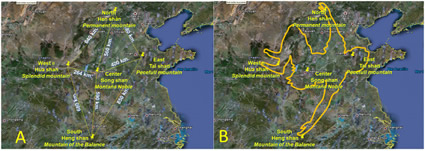
Figure 11: A) 5 sacred mountains, B) 5 mountains as Pan-Gu (Mimetolith)
8.10 The Wu in Ancient China
It is possible that the five sacred mountains and the sacred space that they defined had its origin in some ancient shamanic practices. The Chinese character Wu means five, for example wu hsing (five elements). Hopkins and Schafer were the first proposing to translate wu as ‘ (shaman comes from the Tungusu-Manchurian language), but Boileau (2002) say “my conclusion is that even the common point between wu and Siberian shaman (the link with sexuality) is not sufficient to allow for a translation of ‘wu’ by ‘shaman’, especially in view of the differences of social and historical context.
The oldest writing style of the character Wu depicts the four cardinal directions-North, South, East, and West. This is the pattern that the ancient Wu applied to the center of their bodies, the point to communicate with the other four directions, it was through this practice that they understood the Universal Way.
The character Wu then may be a key, a synthesis of the shamanic knowledge of geography and astronomy “Excluded from the rubric of mythical figures are fourteen named shamans, who may have been historical figures” (The Classic of the Mountains and seas – XXIII). The five sacred mountains (the body of Pan Gu) as a giant Wu symbol, define the sacred and ritual space. The influence of PAH triad looks clear.
In The Classic of Mountains and seas, “From Cosmology to Mithogeography” (VXI), Birrel declares: “The primary model used by the authors of the Classic may be expressed by the following world picture. The sky is a round canopy composed of nine layers wish covers a square earth. The two elements of light sky and heavy earth are separated by world mountains wish prop up the sky. The four corners of the earth serve as directional markers; the centre of the earth serves as a fifth directional marker. Surrounding this earthly square is a linear stretch of water, named the North, South, East and West Seas. Surrounding the Four seas is a further linear area known as the wilderness, named after the four compass points”… …“Earlier cosmological accounts of this world picture presented a simple model of a square earth canopied by a round sky…”(XVI)
The wu zhu coins (fig. 12 A) appeared in China approximately 2.000 years ago and first started appearing following the Han Dynasty, some coins have stars, moons, auspicious clouds, etc. The Wu Zhu coins may be a symbol of “Wu”, the union of the sky and earth (yin and yang). The circle may represent the horizon and sky, the central square may represent the four cardinal directions with the centre. Using pareidolia and apophenia we can say that the “Wu Zhu coin” is the same symbol that represents Pan Gu where the five mountains drawn a square in the landscape. It might be interpreted as topological representations on a modern geographic information system (GIS).
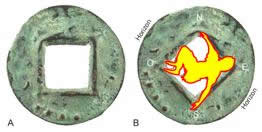
figure 12
In the figure 12: A) The wu zhu coin shown here has what appears to be a series of four "stars" on its reverse side below the square hole (Wu Zhu Coins (http://primaltrek.com/charmcoins.html) (june 2009) B) The circle of the coin may represent the horizon, the central square the four cardinal points, Pan Gu’s body is both, the square and the centre.
The same design is in the True Form of the Five Marchmounts, figure 24 A). According to Sima Chengzhen (674-735) cited by Yuejin Wang (2005), the mirror shows heaven as a circle and earth as a square.
8.11 The worship to the mountains in China:
Terry F. Kleeman (Mountain deities in China: the domestication of the mountain god and the subjugation of the margins. (Journal of the American Oriental Society, April-June, 1994 (http://findarticles.com/p/articles/mi_go2081/is_/ai_n28648194), describes the origin and characteristics of the cult to the mountains in Ghosts, Sprites, and Imps of the Mountains:
“The Scripture of Mountains and Seas (Shanghaiing) describes the gods of many mountains, and they are a frightening collection of freaks and monstrosities. The gods surrounding Mount Min in Sichuan, for example, have horse bodies and dragon heads, while those of Great Palace Mountain have human faces on each of their three heads. (31) Most of the beings that the ancient Chinese envisioned in the mountains had more in common with these semi-zoomorphic entities than the staid regional rulers of the march mounts, but even the march mounts reveal a more unorthodox aspect in later legend”…
“Ge Hong (A.D. 283-343), the fourth-century proponent of alchemy, was forced to enter the mountains to collect the numinous substances needed for his elixirs. He devotes an entire chapter of his Master Embracing Simplicity (Baopuzi) to the mountains, their wonders, and their dangers, beginning with the following passage:(32)”…
“All mountains, whether large or small, have gods and spirits. If the mountain is large, the god is great; if the mountain is small, the god is minor. If someone enters the mountain possessed of no magical arts, he will certainly suffer harm”...
“The belief in sprites (jing) is founded on the conception that as living beings age, they accumulate spirit (jing).(35) Exceptionally long-lived beings, be they animals like the turtle or crane, or plants like the pine tree, could accumulate enough jing to attain the power of transformation. These are the creatures described above, and they were usually considered to be malefic in nature. Ge Hong equates them with mei, which I translate "devil" because of its common use in collocation with names of fearsome monsters like the wangliang (variously written as or).(36)”…
“At this early stage there seems to be no consistent differentiation between mountain gods (shanshen), mountain spirits (shanling), and mountain ghosts (shangui)”...
Towards the end of the article, he writes “Other denizens of the mountains include mountain gods, ghosts of the dead, demons, and sprites, as well as fearsome fauna like tigers, wolves, and dholes. In early accounts all these creatures are dangerous because of their capriciousness, amorality, and supernatural powers. Over time the class of mountain gods was redefined as dead human beings filling fixed official posts in the supernatural bureaucracy; ghosts, sprites, and demons were subjugated to their rule. In this way the order of civilized life was gradually extended to the mountains, which had once been defined as a marginal realm beyond the confines of the Chinese world”.
The relation Mimetoliths - PAH Triad seems to provide an adapted frame to explain at least partly the phenomenon of deification of the mountains described in Kleeman's article.
The Worship to the mountains evolved in China alongside with the culture. Probably in the beginning Pan Gu, Fu Xi and Shennong, were local gods, who later mutated into mythological prominent figures, bureaucratized with the Chinese state and nowadays they are a mixture of historical prominent figures with mythological beings.
During the course of time they were evolving, acquiring diverse attributes and functions, filtered by the Taoism, the Buddhism, the Confucianism, the communism and nowadays by the western culture. These mutations make it hard to recognize the origins, as former mountains gods, origin of the universe and teachers of the humanity.
8.12 The Legend of Fu Xi
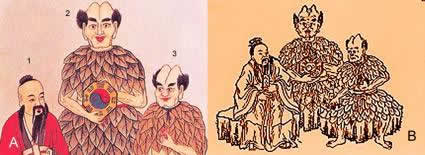
Figure 13: Portrait of Huang Di (1), Fu-Xi (2) and Shen-Nong (3 ancient emperors)
Figure 13 A) “This portrait is created after the image of divine beings in the Classic of the Mountains and Seas…” (http://www.cultural-china.com/chinaWH/html/en/Traditions67bye2424.html). B) a similar image shows Fu Xi and Shen Nong with split heads and Huang Di with a normal head, (http://iccsg.wordpress.com/2006/09/11/orang-tionghoa-keturunan-dari-yan-dan-huang-di-asal-usul-dari-nama-tionghoa-zhonghua/). It seems to be clear that the figure in the centre (Fu Xi with the 8 trigrams) and figure on the right Shen Nong, with a bunch of herbs, represent mountains with heads of double summit with a central crack, the aspect is very similar to the previous figure that shows to Pan Gu with head of double summit.
8.13 Nu Kua and Fu-Hsi
Munsterberg (1986: 81-84, fig. 21-23) describes what may be the earliest depiction of Nü Kua and Fu Hsi: their imagery is that of serpent deities. A spectacular Shang kuang has human figures on two of the legs in which either the lower body is that of a serpent or it is the human body with a snake coiled around it. Two other Shang bronzes show snake ornaments covering the legs of a man who on one bronze is hugged with affection, not aggression, (Bennett Blumenberg, EARLY MYTH AND THE GODDESS IN, ANCIENT CHINA, Blumenberg Associates LLC, 2006, p. 22).
Fu Xi and Nu Kua probably are not serpent deities, but Earth deities. The serpent shaped bodies may be referred to the shape of the mountains that seems a serpent observed from distance (Fu Xi - mountain) and Milky Way (Nu Wua - Sky). The figure 14 show to both with a serpent shaped body and instruments in his hands. A) Fu Xi and Nu Wa surrounded by constellations, source: (http://commons.wikimedia.org/wiki/File:NuwaFuxi.gif), B) Source: Li Ung Bing, Outlines of Chinese History, Shanghai 1914, 151 AD, mural painting from Han dynasty. C) In the top left, a bird (sky animal) and at top right a rat (earth animal), source: Chinese mythological figures Nu Wa and Fu Xi with an unidentified third party. Han dynasty. Tomb mural.

Figura 14: Fu Xi and Nu Wa
Mark Edward Lewis says, “This role of linking Heaven to Earth also figures in the depictions of Fu Xi and Nü Wa. First, in Han tombs their elongated, serpent bodies stretch from the bottom of the register to the top, and in later depictions this vertical ascent becomes even clearer. In Sichuan sarcophagi they play the iconographic role of the dragons on the Mawangdui banners that physically link the earthly realm to that of Heaven. This idea is reinforced through the regular inclusion of two other iconographic traits. Fu Xi and Nü Wa are often depicted with the sun and moon, and they are shown holding a carpenters square (Fu Xi) and a drawing compass (Nü Wa). The former are metonyms for Heaven and the celestial equivalents of yin and yang. The latter suggests the linking of square Earth to the round Heaven. Most scholars agree that the role of the intertwined Fu Xi and Nü Wa was to depict the interaction of yin and yang that underlies cosmic order and thereby secure an auspicious environment for the denizen of the tomb”. (Writing and Authority in Early China, 204
(http://books.google.com/books?id=ql7ATHGee50C&pg=PA272IA2&dq="the+square+with+the+plumb+bob+hanging+from+it"&ei=
MjfRSIWWMYPWtgOD8eTbAw&sig=ACfU3U3VwWZwcsMEsCyvuqCbBkmN6ZC8ig#PPA272-IA2,M1)
The square is a symbol that represents the land, and the compass represents the sky
8.14 Fu-Xi, 8 trigrams, 64 hexagrams.
Fu Xi created the 8 trigrams, representing what happens on the ground and in the sky. The 8 celestial trigrams by turning on the 8 terrestrial trigrams give origin to the 64 hexagrams of the I Ching. Fu Xi's mountain like figure, shows 8 terrestrial trigrams that must be complemented with 8 celestial trigrams, that is to say the marriage of the sky and the ground, the union of the Yin and the Yang.
In Handbook of Chinese Mythology, Humans Were Re-created by the Brother-Sister Couple, Lihui Yang, Deming An, Jessica A. Turner say “This myth basically states that in remote antiquity, there was a great disaster (flood, fire mixed with oil, uncommon snow, etc.). All humans in the world were destroyed except for a brother and his sister. They wanted to marry each other in order to repopulate the earth but wondered whether this was proper. They agreed that if certain things happened in a test, they should get married. The test in some myth versions was to roll two pieces of a millstone down different sides of a mountain. If the stones touched at the bottom of the mountain, the siblings should marry”.
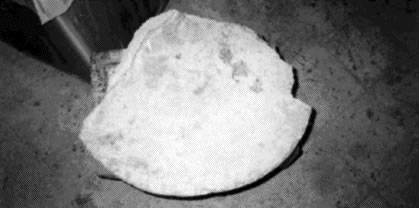
Figure 14: Fragment of a millstone
figure 14 "A pair of millstones (broken) is worshipped in Fuxi Temple at Tianshui City, Gansu Province, northwest China, to commemorate the first sibling-couple ancestors, 1995. (Courtesy of Yang Lihui)"
(http://books.google.cl/books?id=Wf40ofEMGzIC&pg=PA211&lpg=PA211&dq=Taihao+Fuxi&source=bl&ots
=V7lOJT6bpY&sig=MBVaDSjw3zEnbvvXsuclernP0sM&hl=es&sa=X&oi=book_result&resnum=1&ct=result), pg. 68
Probably the Mill stones represent the pair Fu Xi - Nu Wa or sky - ground, or moon - Sun (that resembles two mill wheels during sunrise and sunset when the moon is full) and the mystical union between both of them, according to divine commands. The union between the sky and the land originated the human race. Figure 15 shows “The iconography of Fuxi and Nuwa employed as the sun and the moon gods also appeared in Buddhist art, on the ceiling of Dunhuang Cave 285" (Tianshu Zhu, The Sun God and the Wind Deity at Kizil, http://www.transoxiana.org/Eran/Articles/tianshu.html)
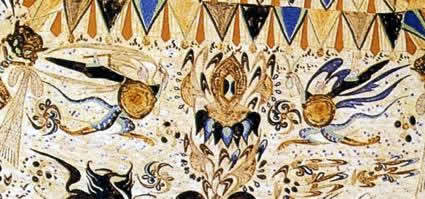
Figure 15: mural of Fu-Xi as the sun y Nu Wa as the moon
8.15 I Ching, the book of the mutations
Fu Xi had the Eight Diagrams revealed to him supernaturally. By the time of Yu, the Eight Diagrams had been developed into hexagrams, which were recorded in the scripture Lian Shan. Lian Shan, meaning "continuous mountains" in Chinese, begins with the hexagram Bound, which depicts a mountain, mounting on another and is believed to be the origin of the scripture's name.
(http://www1.chinaculture.org/created/att/20050928/xinsrc_400902281335626478339.bmp)
Probably Lian Shan’s "continuous mountains” refers to the phenomenon that we have been analyzing in which the mountains and shapes you recognize in them, were useful to interpret the landscape and transformed into "teachers" of the humanity.
D. J. Bogelman
Apparently the key for the intimate meaning of the I Ching or book of the mutations, it is expressed in the presentation by D. J. Bogelman (South American Publishing house, tenth Edition 1991) of the edition in Castilian(Spanish) (p. 12). " In the origin, the I Ching is a book without words. It is a finite succession of not idiomatic signs with infinite meanings ": A perfect algebraic system."
This “book without words” works as a "spot" in Rorscach's test, that is to say, it suggests shapes, images and meaning to the observer. When the hexagrams are observed, the mind of the viewer activates the mechanism of the Pareidolia.
As Bogelman writes, “As such reading, the application and interpretation is equally unlimited and universal. Thanks to the total abstraction, it can an encyclopaedic synthesis of the reality, from the most diverse angles; it can be interpreted as a cosmogony, as a system of logic, or of mathematics, in last instance as a representation of the evident plot of the world, or beyond this one, as a representation of its secret plot."
As soon as the mind of the observer manages to find “the shape, the image and the meaning”, the interpretation is produced by means of the associations that this recognition causes. It is to say, the apofenia operates.
Bogelman again: "The verbal text assigned that came to us - one of the infinite verbal possible translations of the signs - is an epistemological human creation …”
It is to say, the importance of the I Ching does not relies on the text, but on the signs that serve as a spot that forces the mind to first look for the meaning (pareidolia) and then unties the train of associations(Apofenia).
Bogelman: “inspired on a metaphysical vision of this cycle of changeable graphical images of omnivalent meaning.
Because it is a "revealed" book, therefore "sacred”, it can only contain absolute truths, solid guides to interpret the world, life, past, future, etc. This means that the third psychological mechanism is working, Hierophany.
Bogelman: "The text of the I Ching is one of the biggest poetical books and as such virtually untranslatably, and not only because the original one is written in Chinese…”
It means that every interpretation is personal, is the mind of who consults the one that must be put in operation to find the real meaning. The one who consults experiments the triad PAH.
C. G. Jung
The numinous character of the I Ching is highlighted by the psychiatrist Carl Gustav Jung in the prologue, when in the interpretation he says (p. 30) "To ask the same question a second time would have been tactless and so I did not do it: "the master speaks but once."
Later on Jung points that (p. 34) “If the I Ching is not accepted by the conscious, at least the unconscious meets it halfway, and the I Ching is more closely connected with the unconscious than with the rational attitude of consciousness.” It is the field in which the PAH triad works.
He also emphasizes the relation to the unconscious “In the exploration of the unconscious we come upon very strange things, from which a rationalist turns away with horror, claiming afterward that he did not see anything”.
Indicates the intimate and personal character (P. 36) “Clearly the method aims at self-knowledge, though at all times it has also been put to superstitious use.”
Later, referring to the answers he got from the I Ching, he writes (P. 41) “Had a human being made such replies, I should, as a psychiatrist, have had to pronounce him of sound mind, at least on the basis of the material presented. Indeed, I should not have been able to discover anything delirious, idiotic, or schizophrenic in the four answers.”
Finally Jung indicates “On the other hand, any person of clever and versatile mind can turn the whole thing around and show how I have projected my subjective contents into the symbolism of the hexagrams. Such a critique, though catastrophic from the standpoint of Western rationality, does no harm to the function of the I Ching. On the contrary, the Chinese sage would smilingly tell me: "Don't you see how useful the I Ching is in making you project your hitherto unrealized thoughts into its abstruse symbolism?”
Jung's introduction seems to indicate that the same psychological unconscious mechanisms, inherent in everything human being, that give origin to three prominent figures: Pan Gu, Fu Xi And Shen Nong, gave origin to the trigrams, the hexagrams and represent the "psychological Environment" in which those that consult the I Ching, can obtain a answer. They are a dynamic and current proof of the way in which the PAH triad operates.
Probably it also was the "psychological Environment” that gave origin to the Chinese writing associated with the oracular function in the Oracle Bones.
8.16 Shen-Nong and the human shaped mountain
According to the legend, in ancient times, a man called Shennong, who also was the Emperor Yan, forefather of the Chinese nation, was savoring there hundreds of species of grass to treat the diseases of the people. Since the mountains were so high and full of dangers, Shennong was making stairs and gathering medicinal herbs. Later, to honor his memory the people named this area "Shennongjia" or Shennong's strairs (http://espanol.cri.cn/1/2003/12/08/1@1129.htm)
The triad PAH allows offering an alternative explanation. Figure 16, elaborated based on photographies taken from (http://www.pbase.com/frankhuang/primitive_worldshenongjia), shows the area of Shen Nong's altar in Shennongjia, Province of Hubei. A) Shows Shen Nong's figure in the first plane, on his head two horns. B) Shows a panoramic view of the altar with the mountain on the back. C) The picture rotated 90 º, allows seeing the human profile and on the top left a protuberance that might have suggested the horns. This figure shows that probably the model for Shen Nong's representation was actually the mountain.

Figure 16: Shen Nong’s Altar in Shennongjia and mountain as a mimetolith
8.17 Monte Tai, Human shaped mountain
In figures 17 A and 17 B Mount Thai exhibits a human profile that could be use as model or suggest the legend of the transformation of the body of Pan-Gu in a mountain.
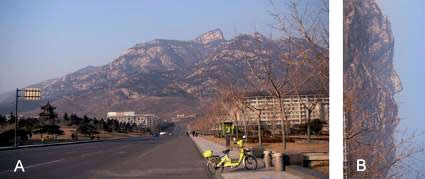
Figure 17: A) Tai Mount from Taishan square shows the shape of a face
(source: Panoramio, Googleearth, photo by Nian). B) Shows the "face" turned in 90 º.

Figure 17: B) Show the view of the Tai'an from the hotel window.
The arrow points to the face shape of the mountain. A) The face rotated 90º.
8.18 Gongshi Chinese viewing stones
The Gonshi demonstrates the relevance of the phenomenon of the pareidolia and the Mimetoliths in the Chinese culture. In Japan are called Suiseki (sui = water and seki = stone, Suseok in Korea, landscape stones, viewing stones or mimetoliths in modern language.
Gongshi is the Chinese term for stones that evoke something from the viewer. Gong means "spirit" and shi equals "stone", 'Spirit Stones', the most popular English term for these stones today is 'Scholar's Rocks'. Gonshi and Mimetolith are synonym.
The Chinese interest in collecting rocks for religious or aesthetic purposes has begun probably during the Han dynasty (206 B.C.-A.D. 220) when Chinese people started to use stones to decorate their gardens and courtyards. The Gonshi is the art of enjoying rocks and stones shape in their natural state.

Figure 18
Fig 18. Gongshi stones (http://www.art-by-nature.nl/category.php?cat=Medium%20Stone) A) Butterfly and flowers, B) Bird and flower, C) Landscape, D) The moon shines in the river.
The Gongshi demonstrates that what the western culture today knows as Mimetoliths and the phenomena associated with the PAH triad, in China has a thousand-year-old presence.
Gonshi, Suiseki, Suseok, as Mimetoliths, produced then, and today, a huge psychological impact, they are the dynamic expression, constantly updated and re-elaborated by diverse cultures, of the phenomena of the PAH triad.
8.19 The Suiseki

Figure 19: Suiseki
The suiseki stones must be classified in three categories:
1. Landscape: yama-gata-ishi (Mountain), dan-seki (Plateau), shimagata-ishi (Island), keiryu-seki (Mountain’s Rivers), mizutamari-ishi (Lake), dokutsu-ishi (Cave), yadori (shelter), or domon-ishi (tunnel), isogata-ishi (Coast with Beach), iwagata-ishi (with cliff ), - taki-ishi = Waterfall.
2. Objects: funagata ishi (boat), hashi ishi (bridge), yagata ishi (house), dobutsu seki (animals) o sugata ishi (antropomorphics).
3. Precious stones: A) shikisai seki (different kindm of color), B) mon’yo seki (different surface (vegetables, abstract, astronomical objects…)
This demonstrates a high degree of specialization and refinement in this way of observation of the nature. It gives origin to a particular style of rock works, in which natural rocks with evocative forms are considered "special" and preserved for further contemplation, becoming transportable rock works, that is to say that can be moved without losing the relations with other rock works or with the "surrounding", as in the case of the not transportable rock works, that make sense in relation with their environment (Bustamante 2005-1, http://rupestreweb.info/elmauro.html, Bustamante 2005-3, http://rupestreweb.info/obrasrupestres.html).
Figure 19 A, (http://groups.google.es/group/foro-de-suiseki), shows a modern example of a stone that resembles a mountain or yama-gata-ishi, in Japanese. Figure 18 B (http://es.wikipedia.org/wiki/Suiseki), shows a human shaped rock or sugata-ishi, in Japanese.
The Three images of figure 20 show Suseok's examples:
A- Landscape (http://www.lgw98.com/zeroboardlgw98/zboard.php?id=suseokgallery)
B- Dog (http://www.ystones.com/dujiangyanstones.html)
C- Landscape (http://www.lgw98.com/zeroboardlgw98/zboard.php?id=suseokgallery)

Figure 20: rocks, Suiseki
8.20 Mountains of double summit
The drawings that show Pan Gu, Fu Xi and Shennong with a cracked head as a mountain with double summit, might be indicating phenomena similar to that of the Chahuareche mountain, IVth Region, Chile that shows a double summit and during the winter, the snow produces an effect similar to a human face on the hillside (http://rupestreweb.info/hierofania.html, fig 7 y http://www.rupestreweb.info/pareidolia2.htm fig 9).

Figure 21: Chahuareche Mountain
In Egypt the hieroglyphic sign for "mountain" (djew) and that for "horizon" (akhet) (figure 22 A), the Vedic Mount Meru in , the mountain of three summits (tricutadri), Shamash (the Sun) between Mashu's Twin Peaks in Babilonia (figure 22 B (http://www.theosophy-nw.org/theosnw/world/mideast/mi-wtst.htm), the sacred mountains Ebal and Gerizim, identified by Samaritans as the centre of the world, and other similar around the world may be closely related with triad PAH (figure 22 C (http://www.bibletrack.org/cgi-bin/bible.pl?dy=14&mo=04).

Fig. 22
8.21 7.5 The Marchmounts
In early time the five marchmounts were sacred and the Chinese people made sacrifices to them. Terry F. Kleeman describe “Perhaps best known of the mountain gods are the marchmounts or sacred peaks (yue). These mountains, one in each cardinal direction, fix and define Chinese space. Their worship may go back as far as the Shang.
The character yue occurs frequently in the oracle bone inscriptions as a pictograph of one range of mountains above another.(2) This yue is the object of a number of sacrifices, including the offering of burnt sacrificial victims known as liao, as well as the di sacrifice usually reserved for the high god(s); announcements (gao) are made to the yue and emissaries dispatched to it.(3) The yue can curse both the king and the crops. It is, according to Qu Wanli's calculations, the most common object of prayers for rain and the second most common object (after the Yellow River) of prayers for the harvest. Ding Shan concludes that this yue need not refer to any of the historical marchmounts; the character denotes, he maintains, a ritual performed on any relatively high mountain.(4) Since, however, emissaries are sent to yue, the term must refer to some specific cult site...” …“GHOSTS, SPRITES, AND IMPS OF THE: The marchmounts were only the most prominent of a variety of divine beings associated with mountains. Arrayed spatially according to cosmological theory and organizationally in parallel with the temporal administration, the marchmounts seem to embody the ancient civilization of China. There was, however, another side to the supernatural denizens of China's mountains”. (Mountain deities in China: the domestication of the mountain god and the subjugation of the margins. http://ccbs.ntu.edu.tw/FULLTEXT/JR-EPT/terry.html.
Time after, the original symbolic meaning was loss and the Daoist was replaced by a different kind of symbolism. In Shaping the Lotus Sutra, Yuejin Wang say “The Chart of the True Form of the Five Marchmounts (Wuyue zhenxing tu), as seen in some old engraving whose date remains unclear, exemplifies the topographic map as an alternative form of talismanic symbolism. (fig. 4.16), as opposed to the incantatory inventory mode. Paramount among the Daoist ilustrations, the charts of this kind were already in existence in the third century and where perpetuated, and most likely adapted, in Tang times and later… …“The True Form of the Five Marchmounts is an image of the mountains and river. Its coiling and tortuous form conveys the shapes and dynamics of the mountain ridges and hills, their varying altitudes, lengths, curves, and stretches. The streams look like flung brushtrokes whose traces overrun hills and cliffs. The dark wildernes of the cloudly forests spreads in the manner of writen characters (Mapping and Transformation, 212).

Fig. 23 A) Detail of pre-modern design of The Chart of the True Form
of The Five Marchmounts, B) Modern contour map.
According to Yuejin Wang “While the received engravings (fig. 4.16 [fig. 23 A in this article]) match this account, it is not clear to what extent they preserve the medieval design. One reliable Tang period version of The Chart of the True Form of The Five Marchmounts is contained in the design of the Mirror Containing Simulacra (hanxiangjian). Sima Chengzhen (674-735), a prominent eight-century Daoist master, provide a prece glossing of the design94. According to Sima, the mirror shows heaven as a circle and earth as a square. Inside the square are five geometric configurations, characterized as the “linked mountains” and “patterns of earth”, that represent the “five marchmounts” (fig. 4.17 a [fig. 24 A in this article]). It is easy to see the pictorial variations of this design on some eight-century mirror featuring one peak in the center and four spaced evenly around it, surrounded by the tumbling waves of the oceans (fig. 4.17 b [fig. 24 B in this article])). (Mapping Transformation, 213, Yuejin Wang Eugene, Shaping the Lotus Sutra, Buddhist visual culture in medieval China, University of Washington Press, 2005, ISBN 0295984627, 9780295984629, http://books.google.cl/books?id=8X2bNasjuW4C)
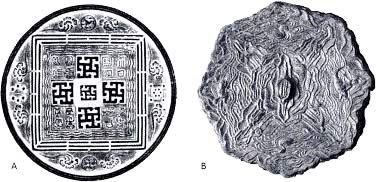
Fig. 24 A) Ink rubbing of back of bronze mirror with cosmological design including a
representation of the
True Form of the Five Marchmounts, Eight century. Palace Museum, Beijing. B) Five Marchmounts and
seascape on the back of a bronze mirror. Eight century. Sengoku Tadashi Collection, Kaisai City, Japan.
The formal impulse and the all–around rotating viewing stance in the pictorial mirror (fig. 4.17 b [fig. 24 B in this article]) may have informed the design of the map of the Todaiji Precinct dated 756, in Japan (fig. 4.18) The mirror design matches more closely the accounts of The Chart of the True Form of The Five Marchmounts contained in The esoteric Transmissions concerning the Martial Thearch of the Han (Han wudi neizhuan),95 probably a late-fourth- or early-fifth-century text.96. The Chart of the True Form of The Five Marchmounts is said to have come from the hand of the Daoist god known as the Supreme Ruler of the Three Heavens:
[He] went down to see the wide world and investigated the differences of lengths and breadths among the rivers and the seas. He also observed the differences of height among the hills and mountains. Then he established the [position o the] Pillar of Heaven and arranged the geographic features in their positions all around it. Then he placed [on the map] the five mountains [in a manner] imitated from the method of concentric zones [i.e. taking one as a central and disposing the others symmetrically]… The rivers are also seen flowing [on the map], some green some black. The assembly of spirits is depicted cradled on the waves; all the inmortals and jade girls are gathered there… ...Thus by the use of the compass and the square the rivers and their upper reaches were measured, and the mountains drawn with circular and curving lines. The mountain ranges bend back up on themselves and the smaller hills wander back and fort. The height of the mountains and the extent of their slopes are shown by lines turning and curving. Indeed, they look like written characters. Thus the written names of the mountains were determined by their respective natural shapes, and the reality of the mountains is enshrined in symbols. 47 (Mapping Transformation, 214-217, Yuejin Wang Eugene, Shaping the Lotus Sutra)
8.22 Influence of pareidolia in the design of graphs.
The influence of the pareidolia seems to remain demonstrated with the following phrases by Yuejin Wang:
- “…The original design of the esoteric graphs is now lost. Medieval accounts characterize them as “grand patterns originating in footprints of birds,” “derivates of nature; characters congealed from the pneuma out of the empty space…” (page. 218)
-
“…The tortuous form that doubles as both topographic contours and celestial graphs acquire talismanic value largely because of the latter’s imagined capacity to communicate with the gods and spirits. Misfortunes are often attributed to the workings of myriad spirits and unseen powers. Topography became a way of classifying and localizing these into chtonic gods and spirits of mountains and rivers. To propitiate or control them involves special means of communication beyond human language. To the extent that sinuous forms represent topographic contours, which were enchanted in the medieval imagination, they have the potential to evoke the presence of gods and spirits associated with topography; insofar as they masquerade as and evoke celestial graphs, the form can be seen as a special means of communication with the spirit world. The topographic picture then becomes a special form of knowledge and power; it lays claim to knowledge of the workings of the unseen forces by way of topographic mapping, thereby symbolically taking in and fixing the numinous topography…” (page. 218)
8.23 Science and Mythology
The line between some scientific and mythological knowledge is tenuous and vague. What today seems to us not to be scientific might be a category of considered relevant phenomena in the antiquity, but irrelevant or not existing in the present.
Birrell points that “The wealth of scientific information in the five books of the classic suggest either that the author was a traveller – naturalist who observed living things in all the regions of China, or the data was collated from regional informants…” Then he indicates …”The careful description of both recognizable and mythological things in nature begs the question, what was perceived to be the dividing line if any, between science and fabulous art? If it is not feasible to pursue that question here, it is possible to comment on the evidence on the Classic for the foundation of a scientific methodology. The style is schematic and systematic, within the parameters of classical natural history. Each of the twenty – six chapters of Books One to Five discusses in turn a mountain, its rivers, its flora, minerals and fauna. The description of livings things is mainly conducted by means of analogy, correlations and homologue...” (The Classic of Mountains and Seas, XXXI y XXXIII). this way, objects and beings are described depending on its resemblance to something.
It integrates in a method and in a coherent unit something that for us constitute two different spheres. The categories of real and mythical are valid for our culture, but in ancient cultures both were the same, just seen as reality. For example, in the Classic one of the Mountains and the Seas, it was logical to describe from a therapeutic and preventive point of view a remedy for a disease as the rheumatism and at the same time and with the same tools a remedy for the bad luck.
It seems like our "scientific medicine" has left definitively behind that one, but in the words of Dr. Carlos Viesca T., “The medicine is the most human of the sciences and the most scientific of the arts "...Referring to the scientific medicine of the second half of the 20th century indicates … “Among the most serious doubts about the real dimension of the scientific advances which the current medicine displays, it is counted the related to the existence itself of the disease. Do they exist, ontologically, the disease, as genre, or the diseases, the morbid species? That is to say, are they real objects? ".... It might seem inconceivable for us, but this raises the question of which in the future as it happens to us with the medicine of the Classic of Mountains and Seas, some of the nowadays considered real diseases might be catalogued of imaginary or non-existent. In this way, the limit between science and mythology seems tenuous. Referring to the occupation of the medical practice, Dr. Viesca indicates …" Medicine is not only a human biology applied to the study of the diseases and their mechanisms, it is likewise a phenomenology that assumes the reality of the well-considered thing, of the lived by the sick human being, for the patient who gives place to the expression of a pathos that is not only a suffering, but passion in the sense of sensitive and emotive alteration, of affection of the individual history. The disease modifies habits and perceptions of the world, feelings and thoughts, is not only psychosomatic but also has an existential repercussion" (http://www.anmm.org.mx/academia/?Q=content/la-medicina-conocimiento-y-significado-acad-carlos-viesca-t).
9. Conclusions:
The precedents analyzed seem to indicate that Pan-Gu, Fu-Xi and Shen-Nong, in their origin, might have been three mountains that thanks to the psychological phenomena of Pareidolia, Apofenia and Hierofanía (PAH triad), were humanized and sacralized.
These three prominent figures might have represented the spirit of these mountains.
The visual analysis of illustrations and photographies of the mentioned sources, indicates that the origin of these legends might have been mimetoliths.
The 5 sacred mountains in which the body of Pan Gu transformed into after his death, represent the biggest mimetolith discovered until now (1,100 km length per 660 km width).
All of the sources presented seem to be an evidence of the influence of the PAH triad and the megaliths in the origin of the relevant legends of the Chinese culture.
“The Classic of Mountains and Seas " carries a solid confirmation of the sacralization of the landscape and the elements that constitute it, by means of the transformation in visual symbols (mimetoliths) thanks to the Pareidolia, establishing a series of relations between them and with the surroundings thanks to the apophenia. According to Birrel the aim was “to provide to comprehensive Survey of the Whole World, a descriptio mundi ".
Special thanks to
My dearest friends Roberto González and his wife Lourdes Gispert, to José Miguel Ruiz Tagle and his wife Ximena.

—¿Preguntas,
comentarios? escriba a: rupestreweb@yahoogroups.com—
Cómo citar este artículo:
Bustamante D, Patricio, Bustamante, Daniela y Yao, W. Fay. The Worship
to the Mountains: A Study of the Creation Myths of the Chinese Culture.
En Rupestreweb, http://www.rupestreweb.info/china.html
2010
Bibliography
Birrel Anne 1999a Translation of The Classic of Mountain and Seas, Penguin Books.
1999b Chinese Mythology: An Introduction, JHU Press, http://books.google.cl/books?id=_D_vC6a_CoQC&printsec=frontcover
Boileau Gilles 2002 Whu and Shaman, Bulletin of the School of Oriental and African Studies, 65:2:350-378 Cambridge University Press http://journals.cambridge.org/action/displayAbstract?fromPage=online&aid=109729
Bustamante, Patricio 2006a, Hierofanía y Pareidolia Como Propuestas de Explicación Parcial, a la Sacralización de Ciertos Sitios, por Algunas Culturas Precolombinas de Chile
http://rupestreweb.info/hierofania.html (june 2009)
2007b, Pareidolia y apofenia como fenómenos extendidos y como herramienta de análisis de obras rupestres y sitios arqueológicos pertenecientes a diversas culturas (Bustamante).
http://www.rupestreweb.info/pareidolia2.htm (june 2009)
2007d, Aplicación del concepto entorno al análisis e interpretación de los sitios Los Mellizos y Las Bellacas, Alto Río Illapel, IV Región, Chile. http://www.rupestreweb.info/entorno2.html (june 2009)
2008a, ¿Qué Parece? Como Pregunta Orientadora en el Estudio de la Topografía Sagrada en la cultura Azteca http://www.rupestreweb.info/queparece.html (june 2009)
2008c, Posible Ubicuidad Espacio–temporal de la triada Pareidolia – Apofenia – Hierofania, como probable origen de la sacralización de algunos elementos del paisaje. (Patricio G. Bustamante Díaz,). http://www.rupestreweb.info/triada.html (june 2009)
British Encyclopedia
a http://www.britannica.com/EBchecked/topic/440645/Pan-Ku (june 2009)
b http://www.britannica.com/EBchecked/topic/221233/Fu-Xi (june 2009).
c http://www.britannica.com/EBchecked/topic/539843/Shen-Nung (june 2009).
Christie, Anthony, Chinese Mythology, Library of the World's Myths and Legends Series. New York: P. Bedrick
Dharmananda Subhuti Dietrich R. V. 2001 Understanding chinese medicine, http://www.itmonline.org/arts/understand.htm (june 2009)
1989 Mimetholits. http://www.cst.cmich.edu/users/dietr1rv/mimetoliths/index.htm (june 2009)
Emily
2006 Pilgrimage to Pan Gu http://peer-see.com/blog/pilgrimage-to-pan-guo/2006/04/10/ (june 2009)
Encyclopedia of World Mythology / foreword by Rex Warner, New York: Galahad Books, 1975
Fowler, Jeaneane and Fowler Merv 2008, Chinese Religions: Beliefs and Practices, The Sussex Library of Religious Beliefs and Practices Series. Brighton; Portland, Or.: Sussex Academic Press,
(http://books.google.cl/books?id=rpJNfIAZltoC&dq=Chinese+Religions+:+Beliefs+and+Practices
&printsec=frontcover&source=bl&ots=9WiPWS0oSe&sig=DBqkFY-f4tdbZ9R6Uxr8gBoSnOE
&hl=es&ei=jSA9StOrHIGltgfetsAb&sa=X&oi=book_result&ct=result&resnum=1)
Giles Jim 2005. "Internet encyclopedias go head to head". Nature 438: 900–901. doi:10.1038/438900a. http://www.nature.com/nature/journal/v438/n7070/full/438900a.html. (august 2009)
Keightley, David N. 1983. The Origins of Chinese Civilization, with contributions by Noel Barnard... [et al.] Berkeley: University of California Press.
Conrad Klaus 1958. Die beginnende Schizophrenie. Versuch einer Gestaltanalyse des Wahns. Stuttgart: Thieme,
Major, John S. 1993. Heaven and Earth in Early Han Thought: Chapters Three, Four and Five of the Huainanzi, with an appendix by Christopher Cullen, SUNY Series in Chinese Philosophy and Culture. Albany : State University of New York Press.
Needham Joseph. 2000 Science and Civilisation in China VI.6 edited by N. Sivin, XVIII, 261 pp. 10 illus., 3 tables, Bibliographies, Index. Cambridge University Press, p.567
Palmer Martin and Xiaomin Zhao 1997. Essential Chinese Mythology, San Francisco: Harper Collins, p. 2
Schoning Gabriel Reseña Histórica-Mitológica, http://pakua.idoneos.com/index.php/352432 (june 2009)
Stevens, Keith G. 1926, Chinese Mythological Gods, Images of Asia Series, Oxford; New York: Oxford University Press, 2001
Ware James 1966, Alchemy, Medicine, and Religion in the China of A.D. 320, Cambridge, Mass.: M.I.T. Press, 279-80)
Werner, E. T. C. 2008, Myths & Legends of China, George G. Harrap & Co. Ltd.
Wikipedia
a http://en.wikipedia.org/wiki/Pangu (june 2009).
b http://en.wikipedia.org/wiki/Fuxi june (2009).
c http://en.wikipedia.org/wiki/Shennong (june 2009)
d http://upload.wikimedia.org/wikipedia/commons/8/82/Pangu.jpg (june 2009)
Wilhelm Richard 1973, Livre des transformations allemande Version of, Librairie de Médicis, 3, rue of Médicis, Paris.
Yuejin Wang Eugene 2005, Mapping Transformation, 213, , Shaping the Lotus Sutra, Buddhist visual culture in medieval China, University of Washington Press,
http://books.google.cl/books?id=8X2bNasjuW4C)
Ziling Chen 2003, Revered Mountains and Ancient Temples: All Other Mountains Are Below Mount Tai http://www.pureinsight.org/node/1580
[Rupestreweb Inicio] [Introducción] [Artículos]
[Noticias] [Mapa] [Investigadores] [Publique]
| 